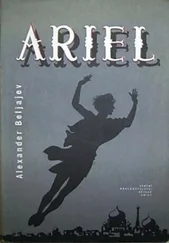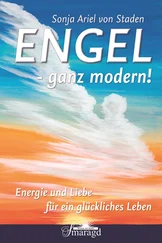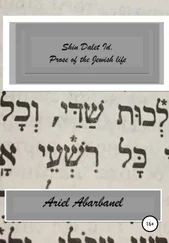Ariel Toaff - Blood Passover
Здесь есть возможность читать онлайн «Ariel Toaff - Blood Passover» весь текст электронной книги совершенно бесплатно (целиком полную версию без сокращений). В некоторых случаях можно слушать аудио, скачать через торрент в формате fb2 и присутствует краткое содержание. Жанр: Религиоведение, на английском языке. Описание произведения, (предисловие) а так же отзывы посетителей доступны на портале библиотеки ЛибКат.
- Название:Blood Passover
- Автор:
- Жанр:
- Год:неизвестен
- ISBN:нет данных
- Рейтинг книги:3 / 5. Голосов: 1
-
Избранное:Добавить в избранное
- Отзывы:
-
Ваша оценка:
- 60
- 1
- 2
- 3
- 4
- 5
Blood Passover: краткое содержание, описание и аннотация
Предлагаем к чтению аннотацию, описание, краткое содержание или предисловие (зависит от того, что написал сам автор книги «Blood Passover»). Если вы не нашли необходимую информацию о книге — напишите в комментариях, мы постараемся отыскать её.
Blood Passover — читать онлайн бесплатно полную книгу (весь текст) целиком
Ниже представлен текст книги, разбитый по страницам. Система сохранения места последней прочитанной страницы, позволяет с удобством читать онлайн бесплатно книгу «Blood Passover», без необходимости каждый раз заново искать на чём Вы остановились. Поставьте закладку, и сможете в любой момент перейти на страницу, на которой закончили чтение.
Интервал:
Закладка:
This was a large-scale phenomenon containing a large Jewish component which had already come to the fore in the regions of northern Italy, in consequence of the persecutions following the Black Death in the mid-14th century as well as sporadically during the century before.
Ashkenazi, i.e., German, Jewish communities of diverse numerical consistency formed in a myriad of localities, large and small, from Pavia to Cremona, from Bassano to Treviso, from Cividale to Gorizia and Trieste, from Udine and Pordenone to Conegliano, from Feltre and Vicenza to Rovigo, from Lendinara to Badia Polesine, from Padua and Verona to Mestre [44] Cfr. A. Toaff, Migrazioni di ebrei tedeschi attraverso i territori triestini e friulani fra XIV e XV secolo , in G. Todeschini and P.C. Ioly Zorattini, Il mondo ebraico. Gli ebrei tra Italia-nord-orientale e Impero asburgico dal Medioevo all'Età contemporanea , Pordenone, 1991, pp. 3-29; A. Toaff, Gli insediamenti ashkenaziti nell'Italia settentrionale,in Storia d'Italia . Annali. XI: Gli ebrei in Italia , tome I: Dall'Alto Medioevo all'eta dei ghetti , by C. Vivanti, Turin, 1996, pp. 153-171.
. Here they stayed, a stone’s throw from Venice, an enterprising Jewish community of considerable economic weight, whose members came mostly from Nuremberg and the adjacent areas. In 1382, a few Jews from Mestre obtained authorization to move to Venice to practice money-lending, but were expelled a few years later, in 1397, for failing to comply with the conditions under which the government of Venice had admitted them to the city [45] Cfr. R.C. Mueller, Les prêteurs juifs de Venise au Moyen Age , in "Annales ESC", XXX (1975), pp. 1277-1302; Id., The Jewish Moneylenders of the Late Trecento Venise . A Revisitation, in "Mediterranean Historical Review", X (1995), pp. 202-217.
.
The Serenissima thus returned to its traditional policy of refusing to grant permanent residence to Jews on the banks of the Great Canal, except under exceptional circumstances and for periods of short duration. This policy, frequently quite contrary to actual practice, witnessed Jews crowding the streets of certain city districts during the day and remaining there in great numbers even after dark, lodged in houses and inns, sometimes for long periods of time. There was no shortage of Jews in Venice: mostly physicians, influential merchants and bankers, having established themselves more or less permanently at Venice. The numerical consistency of this community, heterogenous in professions but more or less homogenous in ethnic origin, originating from the transalpine German-speaking territories, has, until today, been considered
p. 25]
from an unjustly simplistic point of view. Beginning in the second half of the 15th century, they tended to gather in one particular strategic area, a sheltered location in the international market at Rialto, the node of the great trading systems linking the city of Venice, by land and sea, to the centers of the plains of the Po River valley and the German-speaking regions which constituted a constant point of economic, social and religious reference, towards which the eyes of these Ashkenazi Jews continued to be directed [46] Cfr. E. Concina, Parva Jerusalem , in E. Concina, U. Camerino and D. Calabri, La città degli ebrei. Il ghetto di Venezia: architettura e urbanistica , Venice, 1991, pp. 24-25.
. These areas included the districts of San Cassian, where a kosher butcher's shop soon opened, preparing meat according to the Jewish custom, Sant Agostino, San Polo and Santa Maria Mater Domini. At San Polo, they probably also attended the German-rite synagogue, authorized by the Venetian government in 1464 to serve "the Jews who reside in the capital or who meet there to carry on their businesses", with a decree which nevertheless limited their liturgical collective meetings to the participation of ten adults of the male sex [47] Cfr. E. Ashtor, Gli inizi della communita ebraica a Venezia , in "La Rassegna Mensile di Israel", XLIV (1978), pp. 700-701 (the essay has been republished in U. Fortis, Venezia ebraica , Rome, 1982, 17-39). See also Nissim, Un "minian" di ebrei ashkenaziti a Venezia , cit., pp. 44-45.
.
Moreover, the Jewish community at Venice, like the others of more or less distant Ashkenazi origin to be seen in the more immediate and smaller centers of northern Italy, formed part of a German-Jewish koinè , consisting of German-speaking Jews on both sides of the Alps, linked by liturgical usages and similar customs, sharing the same history, often marked by events both tragic and invariably mythologized, as well as by the same attitude of harsh hostility to the arrogant Christianity of surrounding society, the same religious texts of reference, the same rabbinical hierarchies, produced by the Ashkenazi Talmudic academies to whose authority they intended to submit, and the same family structures [48] Cfr. Toaff, Migrazioni di ebrei tedeschi , cit., pp. 7-8, 15-21; Id., Gli insediamenti ashkenaziti nell'Italia settentrionale , cit., 157-159, 165-171.
. These communities made up a homogenous entity from the social and religious point of view, which might be called supranational, in which the Jews of Pavia identified themselves with those from Regensburg, the Jews from Treviso with the Jews of Nuremberg, and the Jews of Trent with those from Cologne and Prague, but certainly not with those from Rome, Florence, or Bologna.
Relations with the Italian Jews who often lived alongside them, where such relations existed, were markedly fortuitous, based on contingent common needs of an economic nature, and the common perception of being viewed as identical by the surrounding Christian environment.
Many of these Ashkenazi Jews did not speak Italian, and if or when they did speak it, it was difficult to understand them due to the heavy German inflection of their pronunciation and the many Germanic and Yiddish terms with which their phrases were cram-packed. Not only the Hebrew language, p. 26]
but the common liturgical usage of German and Italian Jews, was pronounced in a radically different way, so that the two groups considered it impossible to pray together [49] Still at the beginnings of the Seventeenth century, Leon (Jehudah Arieh) da Modena, rabbi at Venice, observed, in this regard, that "nella pronuntia di essa lingua Hebrea sono talmente poi tra di loro differenti, che a pena sono intesi i Thedeschi da gl'Italiani" [“they pronounce the Hebrew language so differently from Italian Jews can hardly understand the German ones”]. (Leon da Modena, Historia de gli riti hebraici, Paris, 1637, p. 36). An informative document in this regard is the inventory of good transported by an Ashkenazi Jew, a native of one of the Jewish communities of northern Italy and traveling to Schwedt in the diocese of Brandenburg, not far from Frankfurt am Oder, in the last quarter of the 15th Century, on his travels. The interesting list appears drawn up in Hebrew and Yiddish, while the Italian terms are transcribed in Hebrew letters (cfr. A.K. Offenberg, How to Define Printing in Hebrew. A Fifteenth-Century List of Goods of a Jewish Traveller and his Wife , in "The Library", Oxford, VI s., XVI (1994), pp. 43-49).
. It is not therefore surprising that Italian Jews were not on terms of much familiarity with German Jews.
Despite their close proximity, they had little knowledge of them, distrusted their aggressive economic audacity, which generally had little respect for the nation’s laws, and dissented from their religious orthodoxy, which they considered exaggerated and depressing. Sometimes, rightly or wrongly, they feared them.
The Italian Jewish koinè , i.e, of distant Roman origin (Jews active in the money trade only moved from Rome to seek permanent residence in the municipalities of central and northern Italy starting in the second half of the 13th century), lived side with the German Jewish koinè, of more recent origin, but without assimilating, without merging and without being influenced, except to a minor and quite secondary degree. They were distant brothers, even if they were not "brothers who hate and fear each other".
Читать дальшеИнтервал:
Закладка:
Похожие книги на «Blood Passover»
Представляем Вашему вниманию похожие книги на «Blood Passover» списком для выбора. Мы отобрали схожую по названию и смыслу литературу в надежде предоставить читателям больше вариантов отыскать новые, интересные, ещё непрочитанные произведения.
Обсуждение, отзывы о книге «Blood Passover» и просто собственные мнения читателей. Оставьте ваши комментарии, напишите, что Вы думаете о произведении, его смысле или главных героях. Укажите что конкретно понравилось, а что нет, и почему Вы так считаете.












